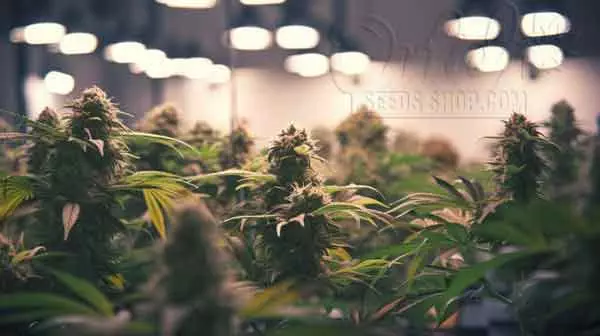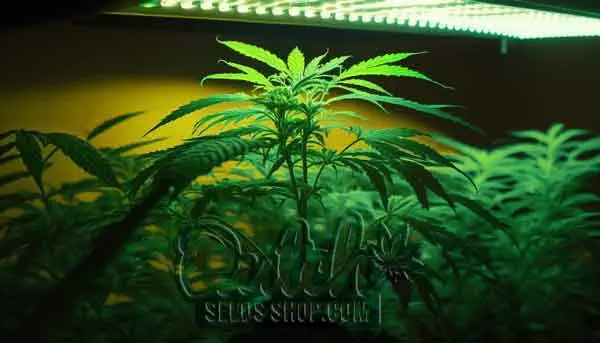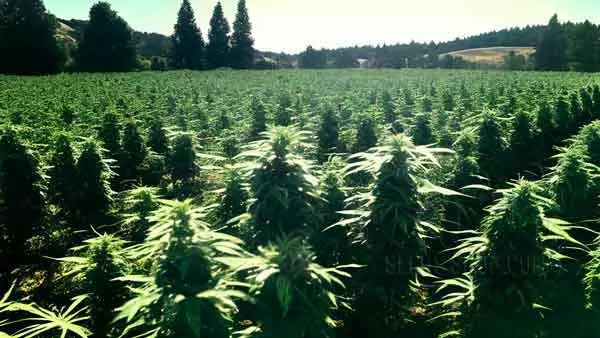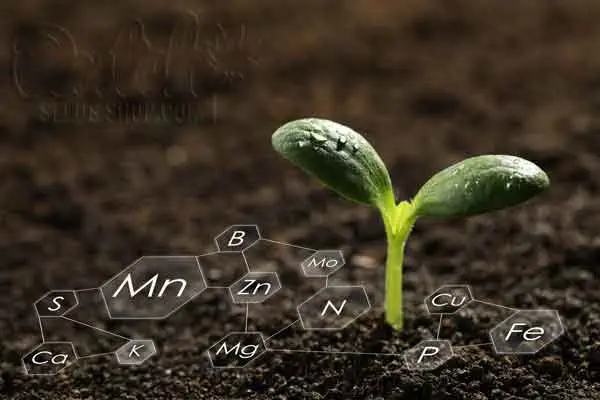How to Grow Bob Marley Strain
Listen up, green thumbs and cannabis connoisseurs! The Bob Marley strain isn’t just a tribute to the reggae legend; it’s a complex and intriguing blend that delivers a mellow high and an array of flavors. Wondering why you need this guide? Because growing Bob Marley requires some know-how, and we’re spilling the dirt – literally!

Get To Know Bob Marley Strain
Ah, Bob Marley, the strain with roots in the Jamaican landrace.
This baby leans 70% sativa and 30% indica, giving you the best of both worlds – mindful uplift and bodily relaxation.
With THC levels ranging from 15% to 20%, it’s not a strain to underestimate.
And CBD? Virtually non-existent at less than 0.1%.
The strain has won hearts with its unique flavors – piney, sage, skunk, and sweet – while offering effects that are happy, relaxed, calming, and analgesic.
You won’t find a ton of awards on its mantel, but you will find a devoted following and endless raving reviews.
| Genetics | Effects | THC/CBD Content | Flavors |
| Jamaican landrace parents | Happy, Relaxed, Calming, Analgesic | THC: 15-20%, CBD: < 0.1% | Piney, Sage, Skunk, Sweet |
Tips and Tricks for Growing Bob Marley Successfully
Ready to venture from seed to harvest?
Let’s dive into growth stages, growing difficulty, and flowering time.
Bob Marley has a moderate difficulty level, so it’s not for complete newbies but doesn’t require a Ph.D. either.
Flowering times range from 56 to 63 days, and when it comes to choosing seeds or clones, both are viable options.
Keep an eye out for cultivation accessories like nutrient solutions and specialized soil to help your plant flourish.
Bob Marley Indoor Growing

Indoor cultivation of Bob Marley strain gives you the control panel to this green machine.
With the flip of a switch or turn of a dial, you’ve got a say in everything from humidity to light cycles, essentially playing Mother Nature.
This lets you amplify this strain’s intrinsic qualities like flavor and THC content while keeping problems at bay.
Benefits of Indoor Growing
Growing Bob Marley seeds indoors is like becoming the master of your own cannabis universe.
You’re in complete control over light exposure, temperature, and humidity levels, ensuring the plant’s optimal growth.
You can also dodge seasonal changes and weather conditions that could harm your crop.
Moreover, an indoor setup enables discreet cultivation and high-level security measures, deterring those sticky fingers from wandering into your garden.
Because of the controlled environment, you’ll end up with consistent cannabinoid and terpene profiles, making every harvest predictably outstanding.
| Advantages | Reasons |
| Control Over Environment | Customize light, temperature, and humidity |
| Consistency | Uniform cannabinoid and terpene profiles |
| Security | Reduced risk of theft and prying eyes |
| Multiple Harvests | Not dependent on seasonal changes |
Setting Up Your Indoor Grow Space
When setting up your indoor grow space for Bob Marley, think of it as creating a wellness retreat for your plants.
Start by designating a specific area, like a spare bedroom or a grow tent.
Factor in space for plant growth, and don’t forget room for equipment and movement.
Install high-quality grow lights, set up an efficient ventilation system, and consider hydroponic systems if you’re up for the challenge.
Organizing your grow space efficiently ensures that you can easily access your plants for regular care, optimizing their growth environment and making your cultivation journey much smoother.
- Organize your equipment layout for easy access
- Invest in quality soil or hydroponic systems
- Calculate power needs and ensure electrical safety
- Keep backup supplies for immediate troubleshooting
Climate Control
Managing your indoor climate is like solving a Rubik’s Cube – complex but satisfying when you get it right.
For Bob Marley, optimal temperature ranges from 70–80°F.
Humidity levels should start high at about 60–70% during the vegetative stage and decrease to around 40–50% during flowering.
The use of environmental controllers is highly recommended for accurate adjustments.
These gadgets sync with humidity regulators, air conditioners, and heaters to ensure your grow room is always in the Goldilocks zone – not too hot, not too cold, but just right.
Any deviation can stress the plants, affecting both yield and quality.
Types of Lights

When it comes to lighting, think of it as your plant’s food.
They crave it.
For Bob Marley, HID lights (High-Intensity Discharge) can work wonders.
Use Metal Halide (MH) during the vegetative stage and switch to High Pressure Sodium (HPS) during flowering.
If you’re new to the game, fluorescent lights are a budget-friendly option but may lack in light spectrum optimization.
LEDs offer a great balance of energy efficiency and spectrum control.
| Light Type | Best For | Light Spectrum |
| HID | Experienced Growers | Broad Spectrum |
| Fluorescent | Beginners | Limited Spectrum |
| LED | Energy Efficiency | Customizable Spectrum |
Growing Mediums and Containers
Soil, coco coir, or hydroponics – each growing medium holds its own magic for the Bob Marley strain.
If you’re going old school, organic soil enriched with compost is a classic.
For more control over nutrients, coco coir or hydroponic systems are more up your alley.
Your choice of containers can also dramatically affect plant health.
Fabric pots offer superior drainage and aeration, while ceramic pots can help stabilize temperatures.
For hydroponics, Deep Water Culture and Nutrient Film Technique are excellent options.
The key here is to match your growing medium and container types to your skill level and the specific needs of Bob Marley.
Caring for Indoor-Grown Bob Marley
Once your setup is ready, it’s time to focus on daily care.
Watering, feeding, and pH balancing are as crucial as setting up your grow lights.
Stick to a nutrient schedule based on the growth stage – more nitrogen during the vegetative stage and more phosphorus and potassium during flowering.
Regularly check for pests and immediately take action if you spot any.
- Monitor soil moisture and adjust watering accordingly
- Stick to a nutrient schedule and adjust based on plant needs
- Regularly inspect for pests and diseases
- Implement a consistent light schedule based on growth stage
Odor Control
If there’s one thing to note about Bob Marley strain, it’s that it loves to make its presence known through its strong aroma.
This isn’t just any smell; it’s a pungent, earthy, and sometimes skunky scent that can infiltrate your entire living space and possibly irk your neighbors.
Effective odor control is not an option; it’s a necessity.
Use carbon filters in your exhaust system to cleanse the outgoing air.
Ozone generators can also neutralize odor molecules but use them cautiously as they can be harmful if misused.
Consider odor neutralizing agents like ONA gel for added protection.
It’s essential to establish an effective odor control system from the get-go, or you might end up in a stinky situation.
Bob Marley Outdoor Growing
Taking the Bob Marley strain outdoors is like letting a bird soar in the open sky – naturally majestic and free.
Growing under the sun offers maximized photosynthesis and lets the plant tap into an array of organic nutrients directly from Mother Earth.
Benefits of Outdoor Growing

Get ready to unplug from the matrix when growing Bob Marley outdoors.
The sheer volume of benefits can overwhelm any grower.
From reduced energy costs to the plethora of organic nutrients accessible in natural soil, outdoor cultivation is economically and ecologically gratifying.
Plus, you get a more diverse terpene profile, thanks to environmental stressors that trigger its survival instincts.
And let’s not forget the massive yield you can achieve with enough space and natural sunlight.
| Advantages | Reasons |
| Energy Efficiency | No need for artificial lighting |
| Organic Nutrients | Natural soil provides balanced diet |
| Terpene Richness | Environmental stressors diversify profile |
| Higher Yields | More space and natural light |
Best Time to Plant Bob Marley Outdoors
If you’re groovin’ with Bob Marley outdoors, timing is your best bud.
In the Northern Hemisphere, aim to plant between April and May.
This takes advantage of the lengthy days and intense sunlight during summer, ensuring your plant grows big and strong.
Southern Hemisphere folks should be laying down seeds from September to October.
- Monitor local frost dates and avoid planting until frost risk has passed
- Check the Farmer’s Almanac for regional climate forecasts
- For tropical climates, avoid monsoon or heavy rain seasons
- Utilize outdoor autoflowering variants for quicker harvests
Setting Up Outdoor Grow Spaces
Creating an outdoor grow space for Bob Marley is a bit like building a fortress – security, location, and climate all come into play.
Choose a remote location that still allows for easy accessibility.
You’ll need to visit your plants regularly for maintenance.
Your space needs at least eight hours of direct sunlight and should be free of prying eyes.
Plan for a windbreak like a wall or tall plants to protect against strong gusts.
Drainage is crucial – nobody likes waterlogged roots.
- Assess the soil quality and amend as necessary
- Set up fencing for security and animal deterrence
- Consider camouflage methods like companion planting
- Install a basic irrigation system for dry climates
Selecting and Preparing Soil
No shortcuts here, folks – the soil is the lifeblood of your outdoor Bob Marley plant.
A rich, organic soil offers a buffet of essential nutrients.
Look for soil with good drainage capabilities; clayey or sandy soil could stifle your plant’s growth.
The pH level should ideally hover around 6.0 to 7.0.
Amend your soil with organic compost, bone meal, and worm castings for an extra nutrient kick.
Don’t forget to test the soil for contaminants – heavy metals or excessive salts could ruin your entire harvest.
Nutrients and Fertilizers

Feed your outdoor Bob Marley plant like a pro athlete, specialized nutrients for specialized needs.
During the vegetative stage, a high-nitrogen fertilizer will fuel robust growth.
When the flowering stage kicks in, switch to phosphorus and potassium-rich options.
Organic fertilizers like bat guano or fish emulsion offer slow-release nourishment without the risk of chemical buildup.
| Growth Stage | Key Nutrients |
| Vegetative | High Nitrogen |
| Flowering | Phosphorus, Potassium |
How to Maximize Bob Marley Yield
Now you’re talking big leagues.
Maximizing your Bob Marley yield outdoors requires a cocktail of careful planning, regular maintenance, and timely interventions.
First off, consider training techniques like topping or Low Stress Training (LST) to increase the number of colas.
Keep an eye on the nutrient schedule – too much and you risk nutrient lockout, too little and your plant could underperform.
Implement regular pruning for better light distribution and air circulation.
- Use growth-enhancing supplements like silica or Cal-Mag
- Implement integrated pest management to mitigate pest risks
- Use netting or stakes to support heavy branches
- Practice selective defoliation to divert energy to bud sites
Alright, let’s bring it home. Growing the Bob Marley strain—whether indoors or outdoors – is akin to mastering an art form.
Every element, from soil quality to nutrient management, plays a role in the symphony of growth.
And oh, the rewards!
Whether it’s the complex terpene profile, the massive yields, or the sheer joy of cultivating this iconic strain, the return on investment is beyond dollars and cents.
Mastering Bob Marley is worth every speck of soil, drop of water, and ray of light you give it.
What you get is an unparalleled smoking experience, a bond with the plant, and bragging rights to having grown one of the most cherished strains in cannabis culture.
FAQ
What’s the flowering time for the Bob Marley strain when grown indoors?
The typical flowering time for Bob Marley strain indoor is around 8 to 9 weeks. This time frame can vary based on growing conditions.
Can Bob Marley plants be grown from clones?
Absolutely, you can grow Bob Marley plants from clones. Cloning allows for a quicker harvest and ensures that the offspring will have the same genetic traits as the parent plant.
Is the Bob Marley strain resistant to pests?
While the Bob Marley strain has some natural resilience, it’s not entirely pest-proof. It’s advisable to employ integrated pest management for best results.
How tall does a Bob Marley plant usually grow?
Outdoor Bob Marley plants can reach heights of up to 6 feet. Indoors, expect a more controlled growth of around 3 to 4 feet.
What’s the average THC content of a Bob Marley strain?
The Bob Marley strain is a potent variety with THC levels ranging between 18% to 22%. Your growing conditions will influence the final THC content.
About the Author
Share the Love:
